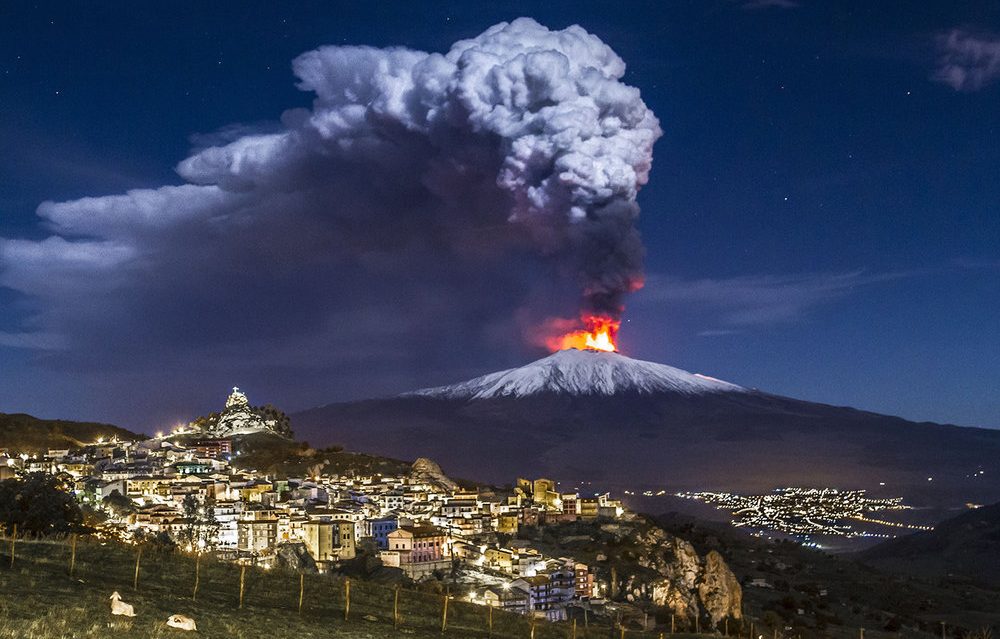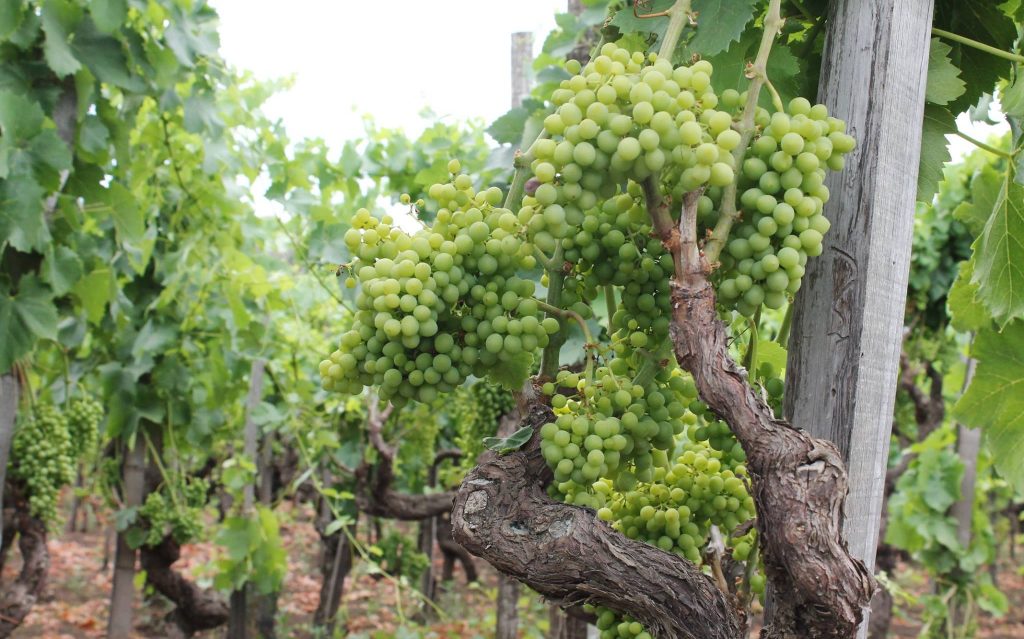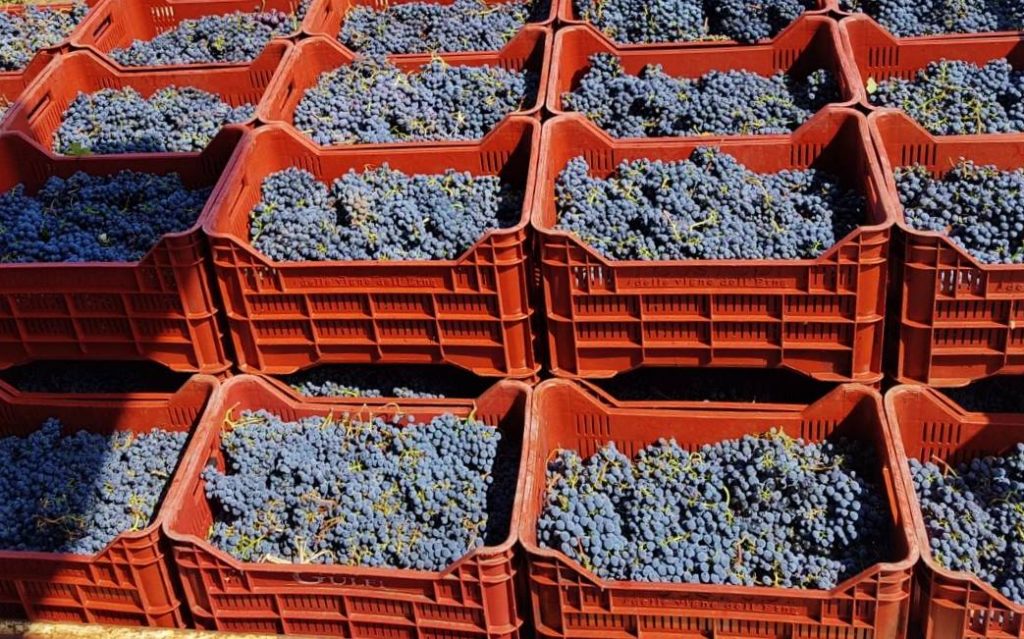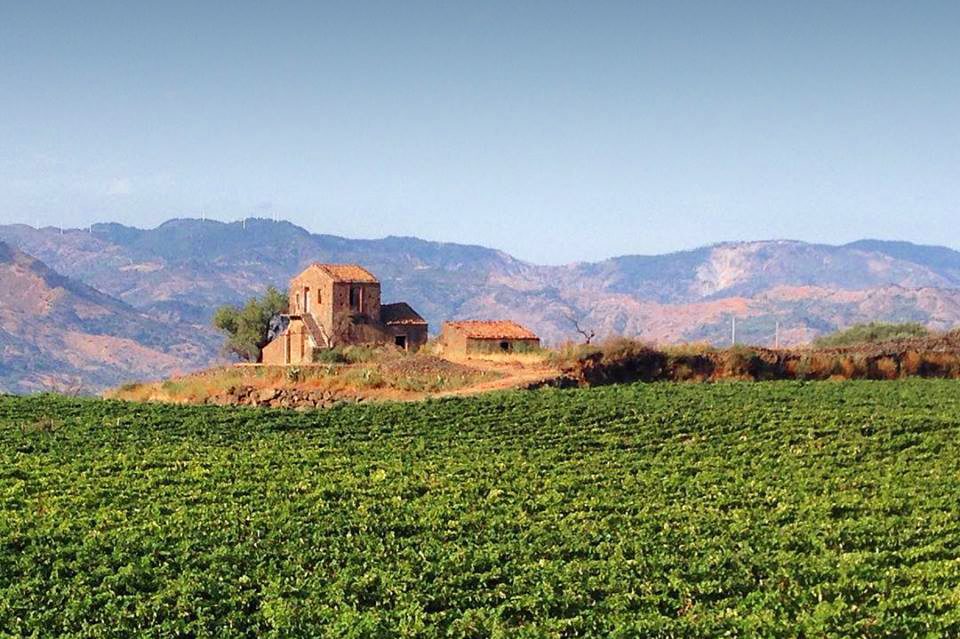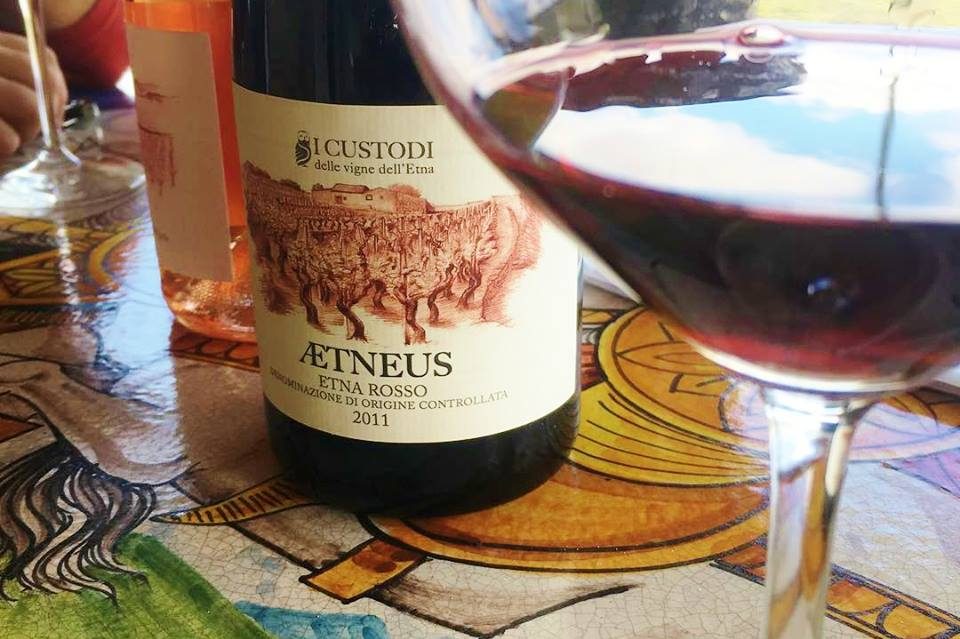A weary mule pulling a short wooden plough trudged from bush to bush led by a craggy faced man holding a short rope.
Slowly but seamlessly, the man and his beast of burden worked to till the soft, almost sponge-like top soils in this remote vineyard in the middle of a grove of tall trees on the northern slope of Mt. Etna, hovering some 3000 feet above a sparkling Ionian Sea. Both laborers were local and neither was young, except perhaps in comparison to the gnarly looking, squatty vines they were tending with deliberate care under the late morning sun on a fine spring day. These ancient Alberello plantings with their arthritic looking short canes encased in thick bark have been around for 30 centuries in one way or another. They look it, too.
This far up the mountain, things take on a lunar feel. Decomposed lava beds blanket the uneven landscape, interrupted only by occasional small patches of chestnut trees and random mounds of shrubbery scattered around like tossed dice. The dry lava underfoot is shifty, making walking unsteady and adding to the celestial sensation. When there’s a wild pig sighting it only further enhances the alien nature of this unique vineyard in the sky.
Welcome to I Custodi and the “Guild of Vigneri,” the resurrected mythical ancient order of “protectors” of Mt. Etna’s native culture dedicated to preserving the old ways with respect for both the mountain’s land and its’ (hard working) inhabitants. Growing grapes and making wine is a unique challenge on Mt. Etna. The hours are long and the difficult work is all done by hand. Throughout the spring and summer, often the only reward is more adversity.
But at the end of the season when the fruit on the paltry old vines finally ripens, something very special takes place and often truly great wines are made from the grapes grown in these desolate sites. At their finest, these epic wines transport one to a vinous paradise somewhere between Grand Cru Burgundy and Cru Barolo. That’s what we have here. Let me explain.
Until fairly recently, viticulture on Mt. Etna was on a slow track to obscurity. The three millennia legacy was long but seemed to have no future. Old vines on original rootstock once flourishing on Etna, began to disappear under a perfect storm of rampant wild weed growth and regrettable human inattention. By the arrival of the new millennia, very few folks were left trying to make a go of it making wine on Mt. Etna.

